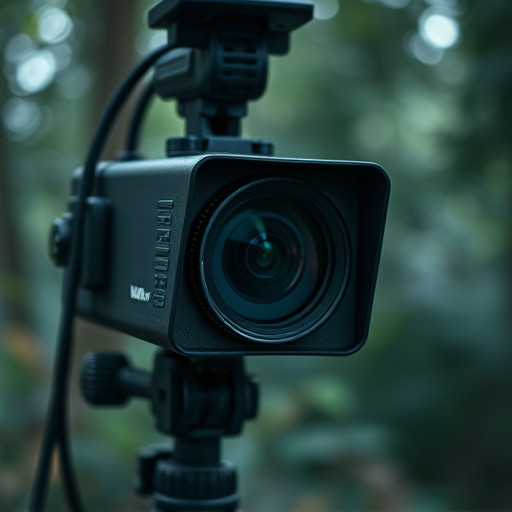Understanding the strategic placement of genuine security cameras is key to identifying fake ones, as fakes often exhibit peculiar angles and random directions. By studying real camera arrangements, businesses and property owners can learn to recognize these telltale signs, enhancing their security posture. Advanced camouflage techniques, including decoy cameras at various angles, divert intruders' attention, creating a false sense of comprehensive coverage. Creative methods like integrating plants or using reflective surfaces manipulate shadows and light, obscuring lenses and further deterring threats. Deploying fake setups misleads criminals, ensuring unobstructed footage capture by real cameras.
Uncover the art of surveillance equipment camouflage with our comprehensive guide. In today’s world, advanced security systems are becoming increasingly sophisticated, making it crucial to understand how to counter them. This article explores the subtle yet effective techniques for disguising or avoiding detection by fake security camera placement angles. From strategic positioning to innovative camouflage methods, we provide valuable insights to help individuals and businesses stay one step ahead in navigation and protection.
- Understanding Fake Security Camera Placement Angles
- Advanced Camouflage Techniques for Surveillance Equipment
- Effective Strategies to Avoid Detection by Cameras
Understanding Fake Security Camera Placement Angles
Understanding where a security camera is placed can be key to spotting fake ones, as their positioning often reveals their true intent. Unlike genuine surveillance equipment, which are strategically positioned for optimal view and coverage, fake cameras frequently exhibit peculiar angles and placements. For instance, they might be mounted extremely high or low, at acute angles, or pointed in seemingly random directions. These unusual angles can indicate that the device is designed more to deceive than to monitor.
By studying real security camera arrangements, individuals can learn to identify these telltale signs of fake cameras. This knowledge becomes especially valuable for businesses and property owners looking to deter would-be thieves or intruders. With awareness about Fake Security Camera Placement Angles, it’s possible to spot these fakes, enhancing the overall security posture of a location.
Advanced Camouflage Techniques for Surveillance Equipment
In today’s digital era, surveillance equipment has become an integral part of security systems, but their visibility can undermine their effectiveness. To combat this, advanced camouflage techniques are being developed to make these devices less obtrusive and more discreet. One innovative approach is the strategic placement of fake security cameras, known as “decoys,” at various angles. These decoys mimic the appearance and movement of real cameras while diverting potential intruders’ attention away from actual surveillance equipment.
By carefully positioning these fake camera placements, security professionals can create a false sense of comprehensive coverage, making it harder for criminals to identify and target genuine surveillance devices. This tactic not only enhances the overall security setup but also adds an extra layer of protection by misdirecting potential threats, ensuring that real cameras can capture footage unobstructed.
Effective Strategies to Avoid Detection by Cameras
To avoid detection by surveillance cameras, it’s crucial to understand and counteract their placement angles. Many security cameras are mounted at eye level or slightly elevated, covering common entry points and high-traffic areas. One effective strategy is to change the perception of these zones by employing creative camouflage techniques. For instance, integrating realistic-looking plants or decoy devices that mimic human figures can disrupt camera views, making it harder for would-be intruders to be captured on film.
Additionally, manipulating shadows and light reflection points can further reduce visibility. Placement of reflective surfaces or strategically positioned lights can obscure camera lenses, creating blind spots. Moreover, using fake security camera setups—realistic in appearance but devoid of actual surveillance capabilities—can mislead potential criminals, making them less likely to trigger alerts. These tactics, when implemented thoughtfully, offer robust defenses against surveillance equipment, enhancing privacy and security measures.
In navigating the complex landscape of surveillance equipment, understanding and employing advanced camouflage techniques are key to maintaining privacy. By recognizing the importance of fake security camera placement angles and adopting effective strategies to avoid detection, individuals can ensure their activities remain unobserved. These methods, when used judiciously, provide a robust defense against over-surveillance, fostering a more secure and private environment in today’s digital era.
